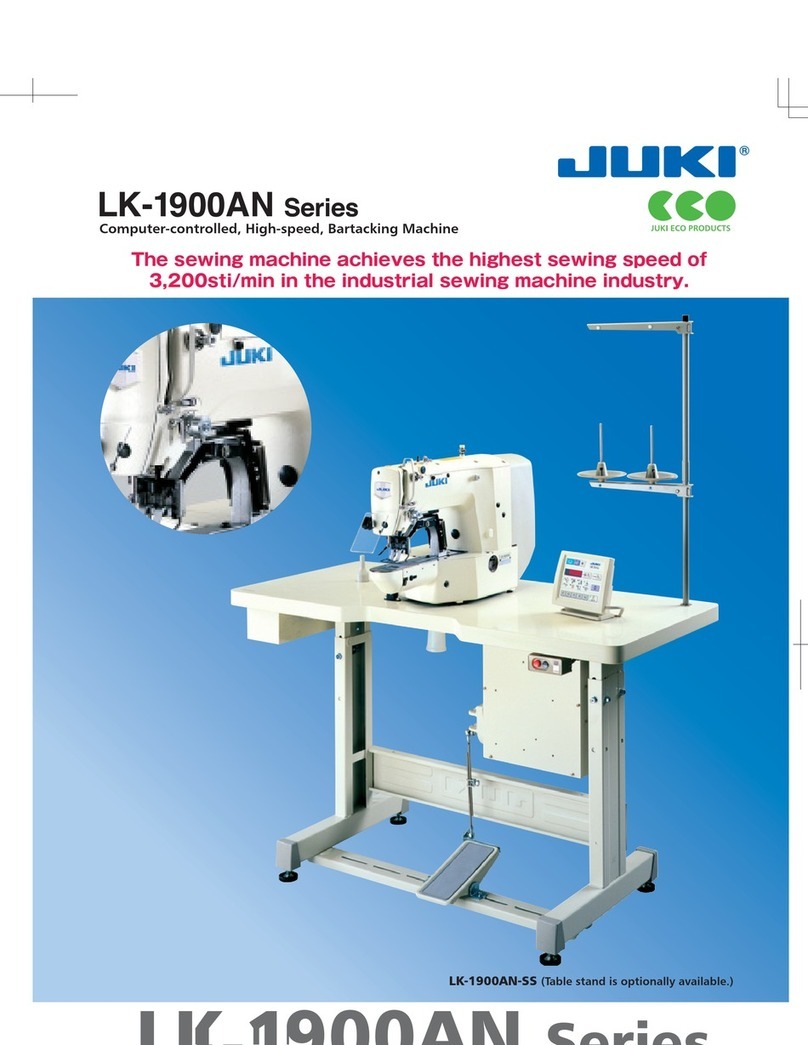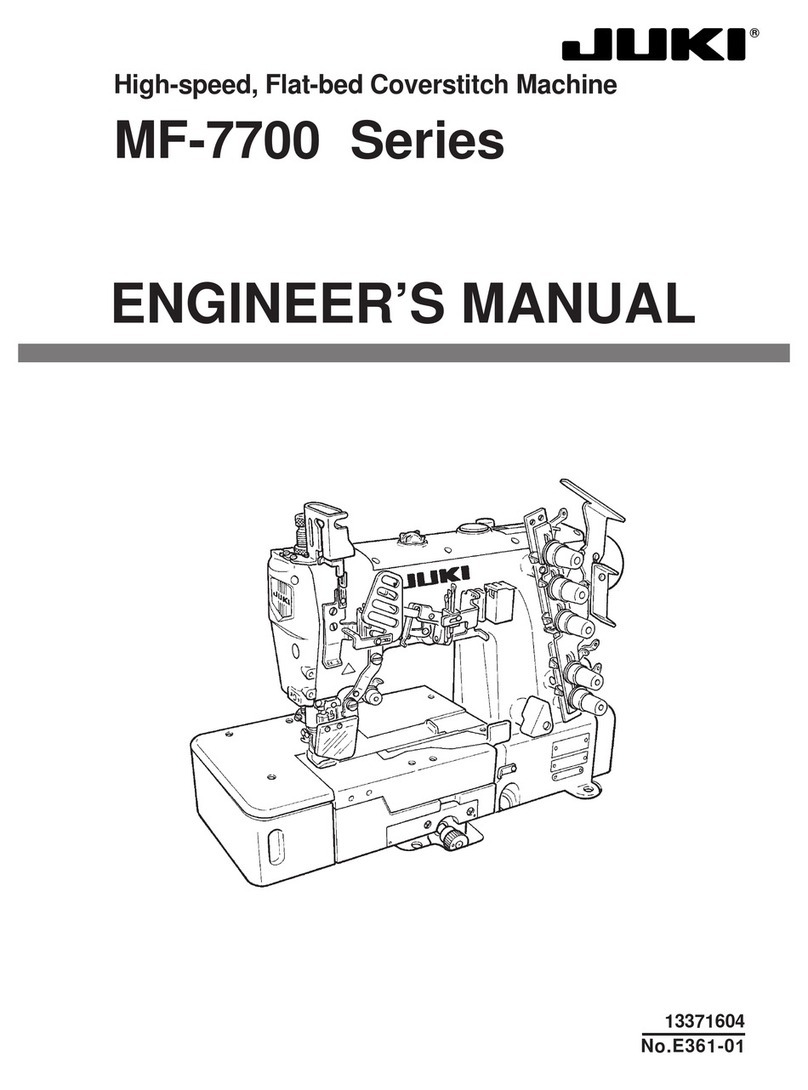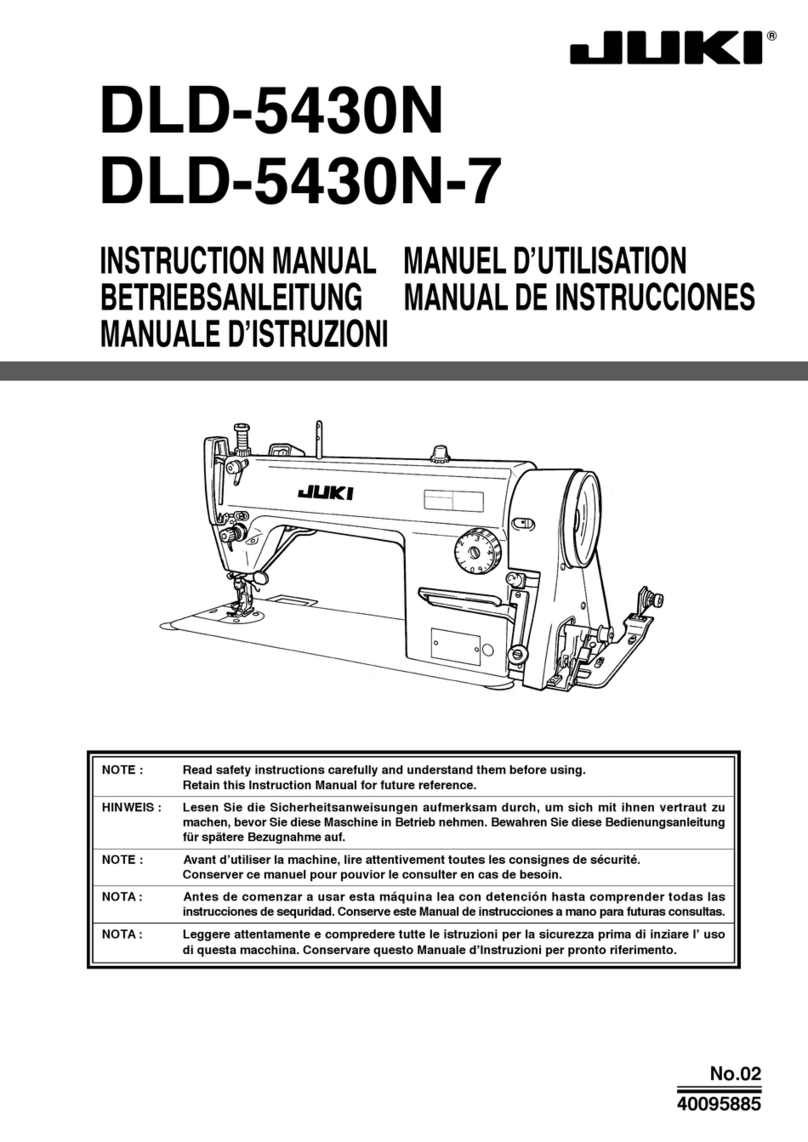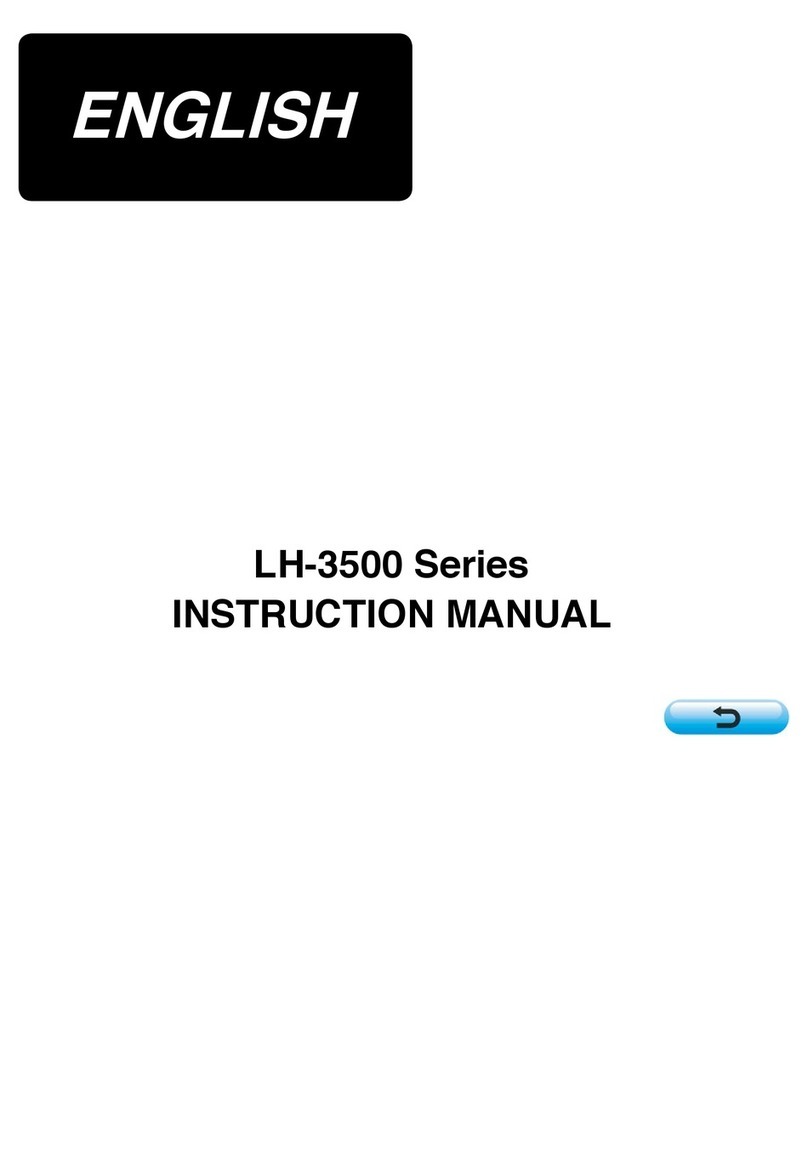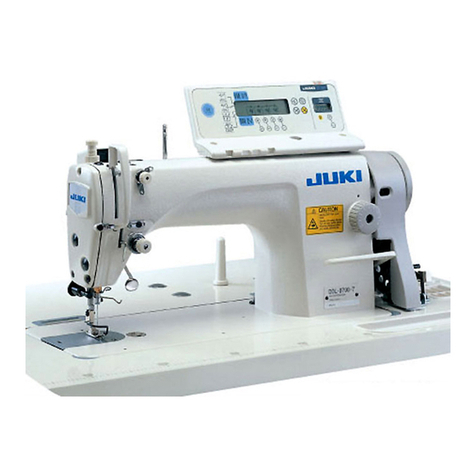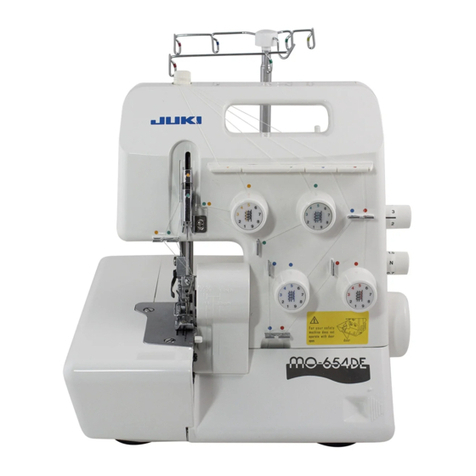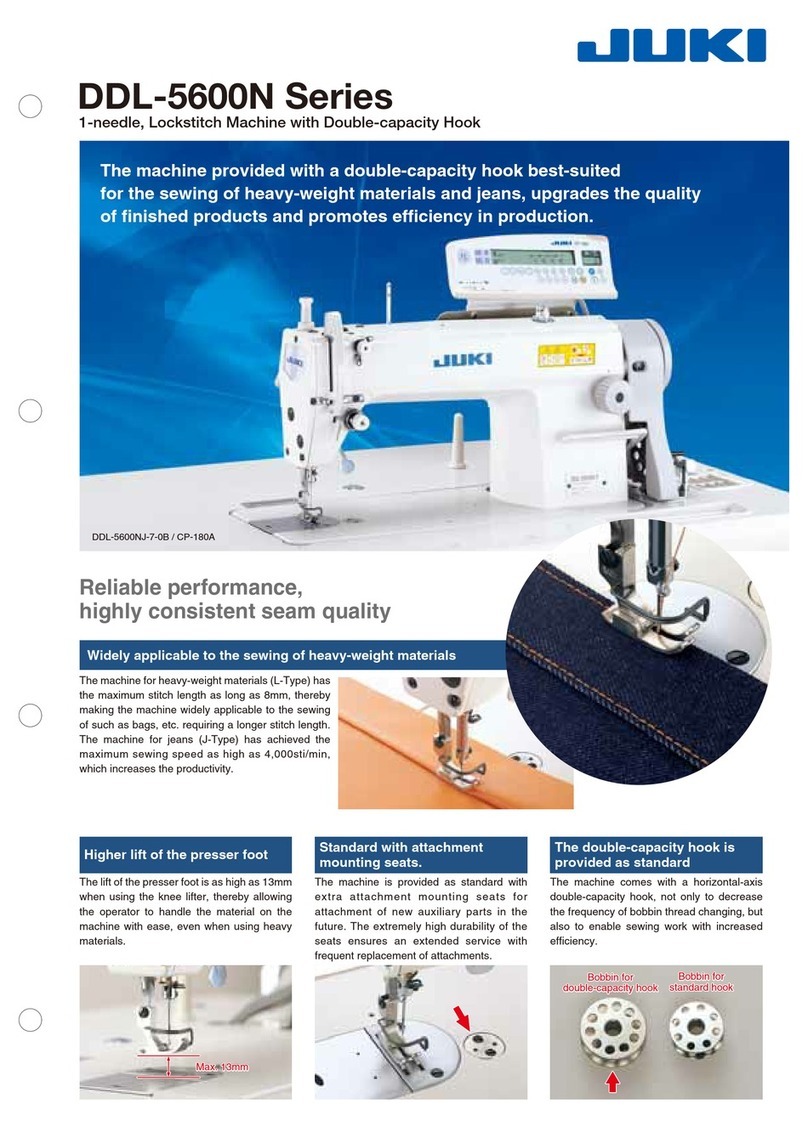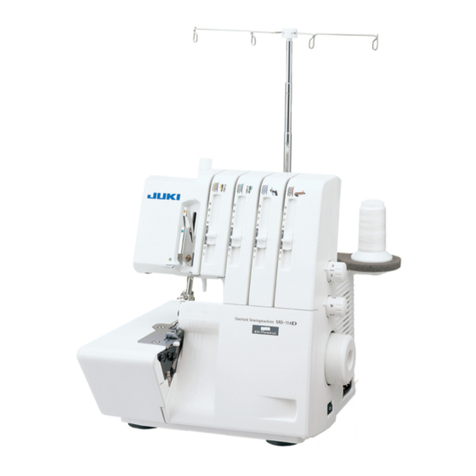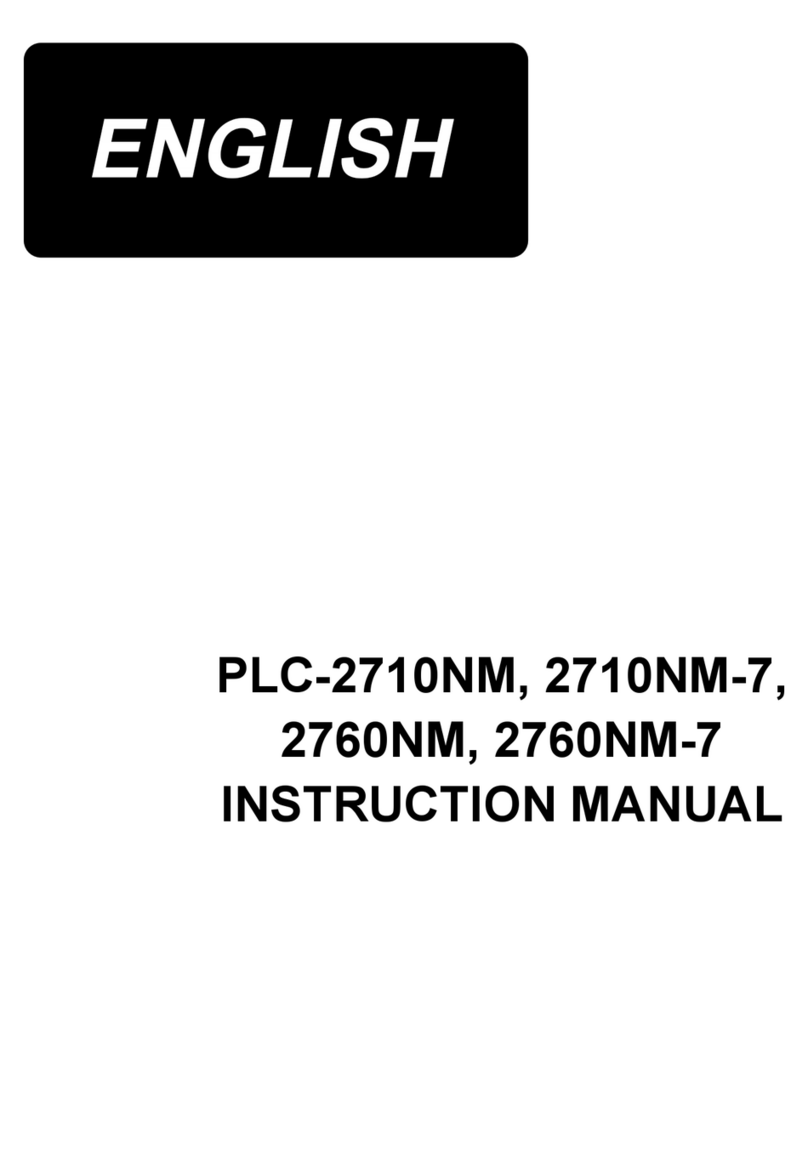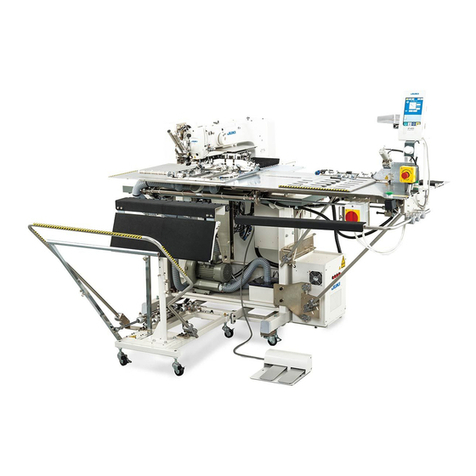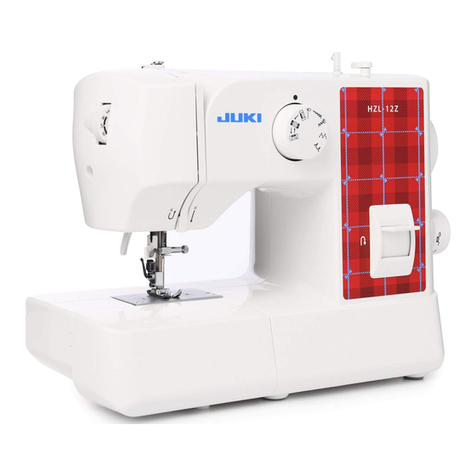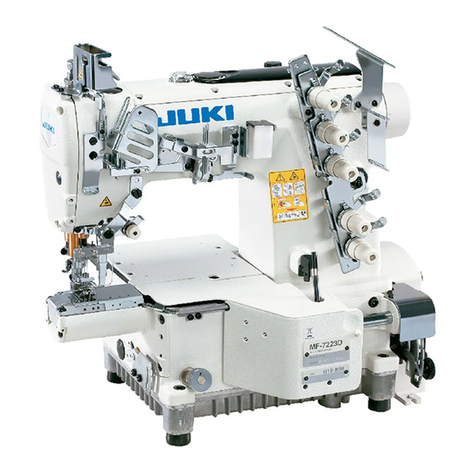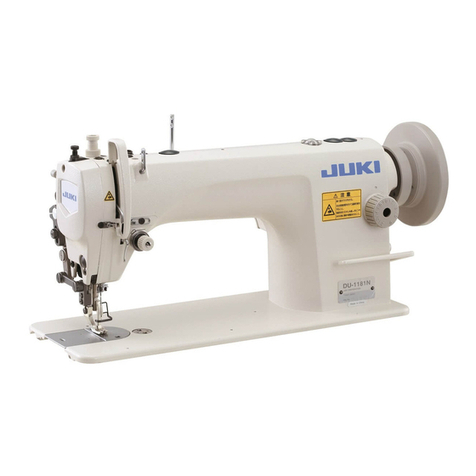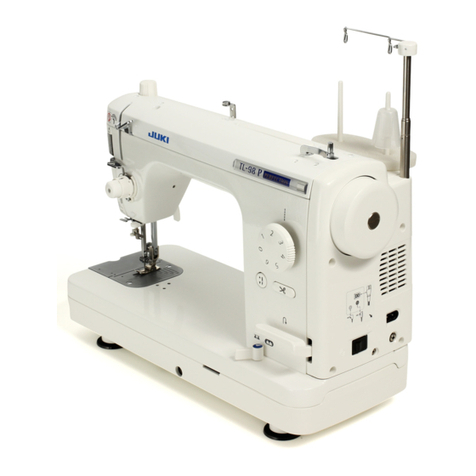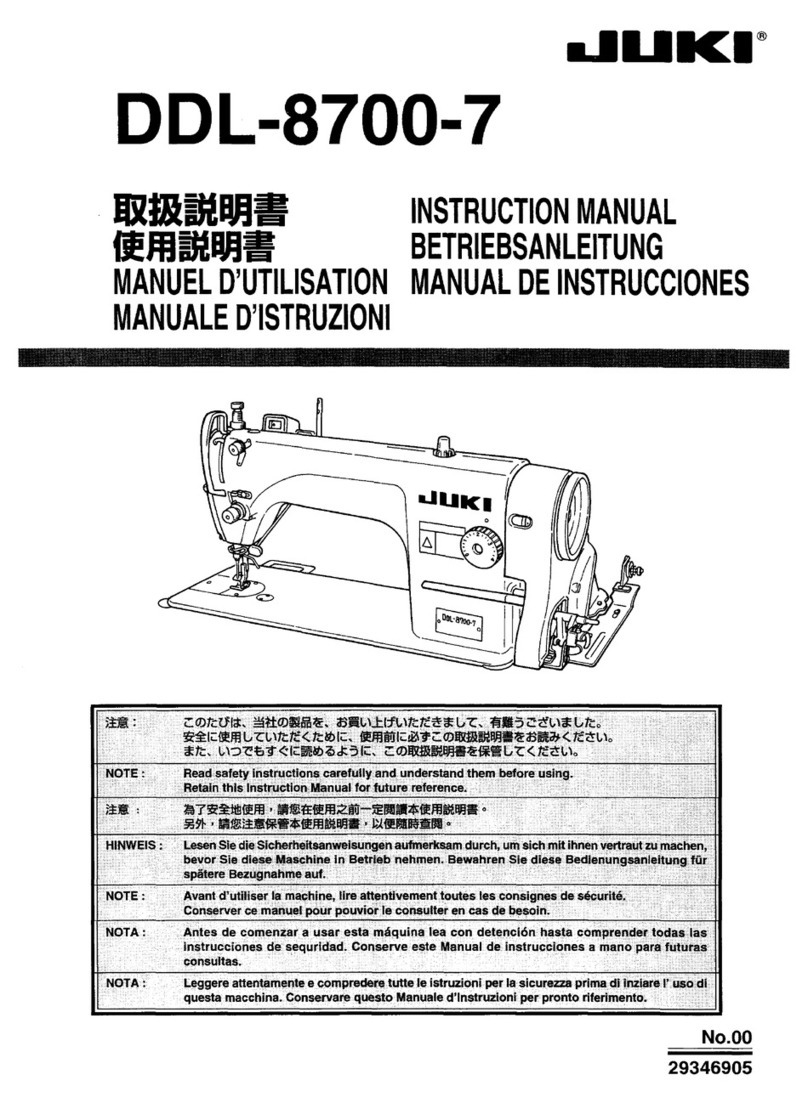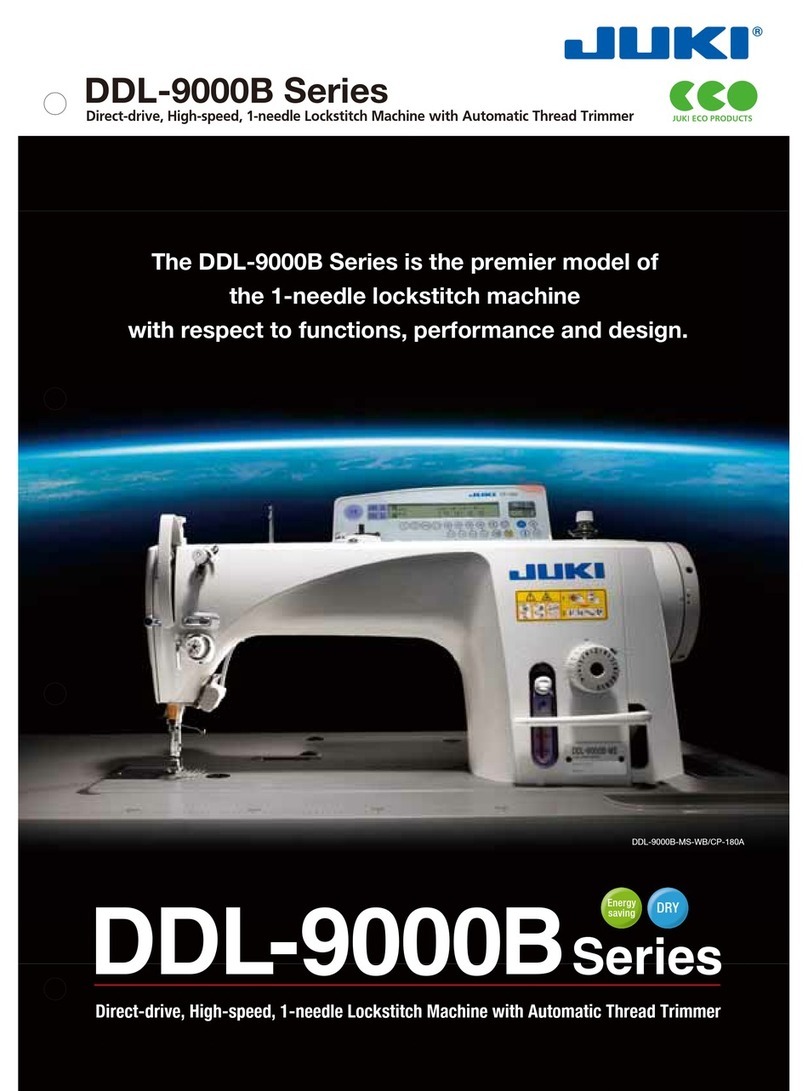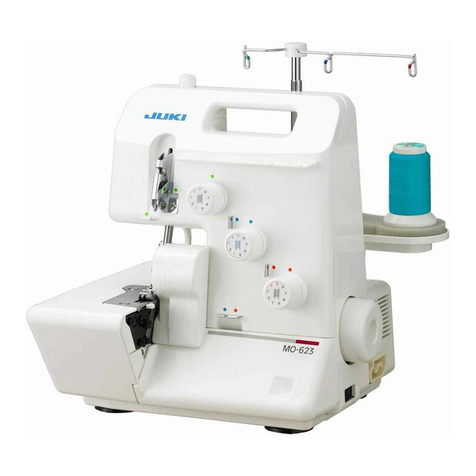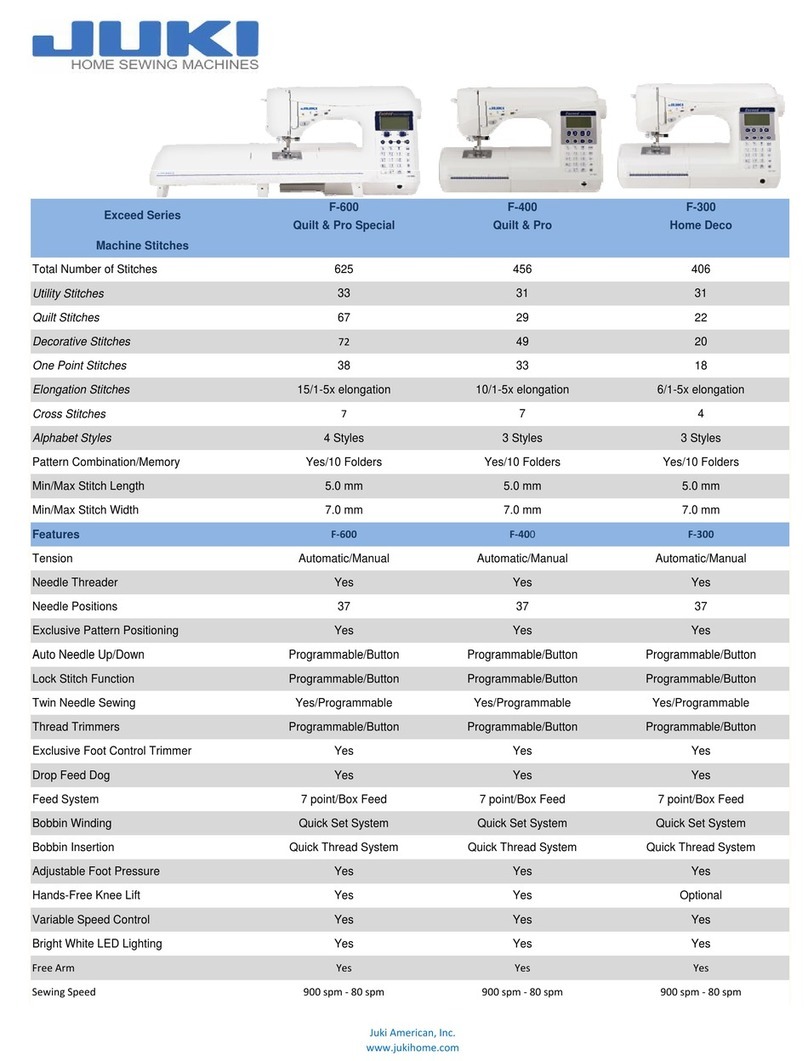
1. Turn the hand-wheel to bring the needle bar to the lowest dead point.
2. Loosen the clamping screw of the needle bar connecting bracket
.
3. Align the marker line Aengraved in the needle bar to the lower end
of the needle bar lower metal and fasten the clamping screw of
the needle bar connecting bracket .
(Cautions) 1. For the needle DP x 17 (Standard), use the second
marker line AA
AA
Afrom the lowest, engraved in the
needle bar.
2. For the needle DB x 1, use the fourth marker line BB
BB
B
from the lowest, engraved in the needle bar.
3. After adjustment, make sure that the outer presser
foot does not come in contact with the needle bar.
oStitch skipping or thread breakage
may be caused.
– 4 –
oIrregular stitches, stitch skipping
or thread breakage may be
caused.
oIrregular stitches, particularly
isolated idling loops, will occur
when the hook timing is too early
or too late.
oIrregular stitches can be improved
when the hook timing is
appropriately set later.
oWhen the hook timing is set too
late, the thread tension may be
lowered.
oIsolated idling loops can be
improved when the hook timing is
set appropriately earlier.
1) Needle Lifting Amount and Positions of the Needle and Blade
Point of the Hook
1. Loosen the set screw of the throat plate and remove the throat plate.
2. Lift the needle bar 2.5 mm up from the lowest dead point.
3. Align the marker line C(for DP x 17) to the lower end of the needle
bar lower metal .
For the needle DP x 17 (Standard), use the lowest engraved
marker line Con the needle bar.
For the needle DB x 1, use the third marker line Dfrom the
lowest engraved on the needle bar.
4. When the positions of the needle and the blade point of the
hook are adjusted, loosen the hook set screw and turn the hook
by hand. Then align the center of the needle with the blade point
of the hook.
2) Clearance between the Needle and the Blade Point of the Hook
1. When setting the clearance between the needle and the blade
point , loosen the hook set screw so taht the clearance of 0.02
to 0.07 mm is provided between the needle and the blade point
.
Adjustment Procedure Results of Improper Adjustment
Adjustment Procedure Results of Improper Adjustment

